Hartford as Soccer Hotbed: Surprisingly, Yes
/If you are wondering why there is optimism for the success of the Hartford Athletic, the city’s new professional soccer team planning to begin its inaugural season later this month, a peek back at ratings for televised international soccer in the U.S. provides some hints.
In March 2016, the Washington Post reported on the U.S. cities with the highest viewership for the Manchester derby between City and United in the English Premier League the previous week. Topping the ratings was Baltimore, followed by Kansas City, Hartford, Seattle, Columbus, the San Francisco Bay area, West Palm Beach, and Philadelphia. Yes, Hartford ranked third that week. The match was the highest-rated Manchester Derby telecast in U.S. history at that time, attracting 1.17 million TV viewers.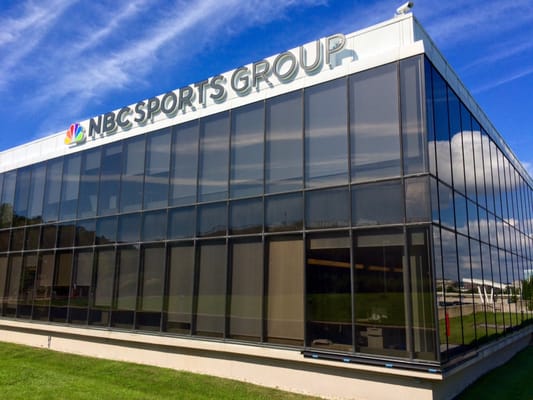
Two years later, when NBC Sports reported on the cities with the highest average season-long ratings on Premier League telecast for the 2017-18 season, Hartford was ranked in the top 10. Connecticut’s Capitol region was outranked only by Baltimore, Washington, Richmond, Providence, Austin, Norfolk and Dallas.
This past Sunday, the top rated U.S. television markets for Manchester United vs. Liverpool, broadcast on NBC Sports Network, once again included the Hartford/New Haven market, at number six. Leading the way once again was Baltimore, followed by Norfolk, Washington D.C., Milwaukee and Jacksonville. Boston was seventh, just behind Hartford/New Haven.
C oincidentally, the telecasts are coordinated not in the U.K., but in Stamford, Connecticut, at the massive NBC facility there, which also serves as the command center for NBC’s Olympic coverage. Approximately 60 work on each match day at NBC Sports’ headquarters, located at 1 Blachley Road on the city’s East Side, the Stamford Advocate reported last summer, just prior to the current season. On NBCSports.com and the NBC Sports app, a record 4 million unique viewers watched during the past season, the Advocate reported.
oincidentally, the telecasts are coordinated not in the U.K., but in Stamford, Connecticut, at the massive NBC facility there, which also serves as the command center for NBC’s Olympic coverage. Approximately 60 work on each match day at NBC Sports’ headquarters, located at 1 Blachley Road on the city’s East Side, the Stamford Advocate reported last summer, just prior to the current season. On NBCSports.com and the NBC Sports app, a record 4 million unique viewers watched during the past season, the Advocate reported.
Hartford Athletic, a USL expansion franchise, will kick off its inaugural season with a game in Atlanta on March 9. The team's home opener is set for May 4. The club announced this week that Trinity Health of New England will be Title Partner and Official Healthcare Provider of Hartford Athletic and featured on both Hartford Athletic’s home and away jerseys. Dillon Stadium, currently undergoing renovation in Hartford, is slated to be the club’s home turf.
https://youtu.be/CYSdgVN_V18



 In the Whalers’ final season in Hartford, 1996-97, attendance at the Hartford Civic Center had grown to 87 percent of capacity, with an average attendance of 13,680 per game. Published reports suggest that the average attendance was, in reality, higher than 14,000 per game by 1996-97, but Whalers ownership did not count the skyboxes and coliseum club seating because the revenue streams went to the state, rather than the team. Attendance increased for four consecutive years before management moved the team from Hartford. (To 10,407 in 1993-94, 11,835 in 1994-95, 11,983 in 1995-96 and 13,680 in 1996-97.)
In the Whalers’ final season in Hartford, 1996-97, attendance at the Hartford Civic Center had grown to 87 percent of capacity, with an average attendance of 13,680 per game. Published reports suggest that the average attendance was, in reality, higher than 14,000 per game by 1996-97, but Whalers ownership did not count the skyboxes and coliseum club seating because the revenue streams went to the state, rather than the team. Attendance increased for four consecutive years before management moved the team from Hartford. (To 10,407 in 1993-94, 11,835 in 1994-95, 11,983 in 1995-96 and 13,680 in 1996-97.)
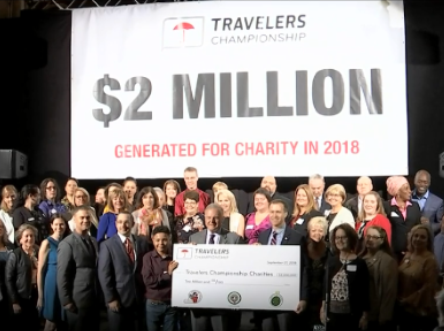 e the community a better place.”
e the community a better place.”





 The Hartford Marathon will mark its 25th running on October 13, 2018. The 2018 Travelers Championship, will be held June 18-24 at TPC River Highlands in Cromwell. The Connecticut Open, at the Connecticut Tennis Center at Yale, will be held August 17-25 in 2018.
The Hartford Marathon will mark its 25th running on October 13, 2018. The 2018 Travelers Championship, will be held June 18-24 at TPC River Highlands in Cromwell. The Connecticut Open, at the Connecticut Tennis Center at Yale, will be held August 17-25 in 2018. CERC first conducted an impact analysis of the tournament in 2011, and completed another impact analysis for the Travelers Championship in 2017. The results were compared, to look at the changes over time and factors that may have influenced changes in the tournament’s economic effects.
CERC first conducted an impact analysis of the tournament in 2011, and completed another impact analysis for the Travelers Championship in 2017. The results were compared, to look at the changes over time and factors that may have influenced changes in the tournament’s economic effects.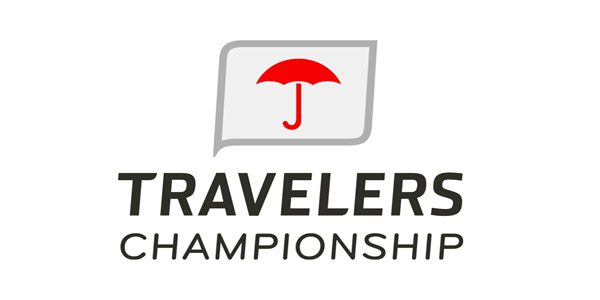 With record attendance, sales and fan engagement, the 2017 Travelers Championship raised the bar across the board through a strategic approach that focused on providing a first-class experience for fans, players, sponsors, volunteers and charity, officials pointed out. This marks the first time that the Travelers Championship has been recognized as “Tournament of the Year.”
With record attendance, sales and fan engagement, the 2017 Travelers Championship raised the bar across the board through a strategic approach that focused on providing a first-class experience for fans, players, sponsors, volunteers and charity, officials pointed out. This marks the first time that the Travelers Championship has been recognized as “Tournament of the Year.”
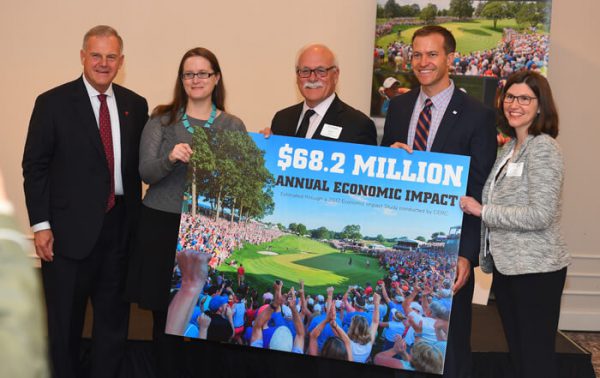

 On the Southern Connecticut State University Owls, a Division ll men’s basketball team, five Connecticut student- athletes have made their way onto the 13 player
On the Southern Connecticut State University Owls, a Division ll men’s basketball team, five Connecticut student- athletes have made their way onto the 13 player 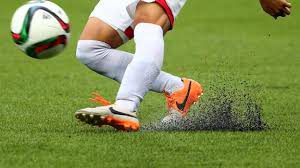
 A synthetic turf study was undertaken in 2016 by four United States agencies — EPA, Consumer Products Safety Commission, the Centers for Disease Control and Prevention/Agency for Toxic Substances and Disease Registry — which has yet to be finalized.
A synthetic turf study was undertaken in 2016 by four United States agencies — EPA, Consumer Products Safety Commission, the Centers for Disease Control and Prevention/Agency for Toxic Substances and Disease Registry — which has yet to be finalized. Blumenthal first became concerned about the artificial surface when his children were playing on the crumb-rubber athletic fields. “I became concerned as a parent, as much as a public official, ten years ago, and at first was somewhat skeptical, but now very firmly believe that we need an authoritative, real study about what’s in these fields,” Blumenthal told ABC News two years ago.
Blumenthal first became concerned about the artificial surface when his children were playing on the crumb-rubber athletic fields. “I became concerned as a parent, as much as a public official, ten years ago, and at first was somewhat skeptical, but now very firmly believe that we need an authoritative, real study about what’s in these fields,” Blumenthal told ABC News two years ago.
 iven the nation’s key public health target of limiting added sugars in children’s diets, flavored milk has come under scrutiny in the context of school nutrition, UConn Today recently reported.
iven the nation’s key public health target of limiting added sugars in children’s diets, flavored milk has come under scrutiny in the context of school nutrition, UConn Today recently reported.




























